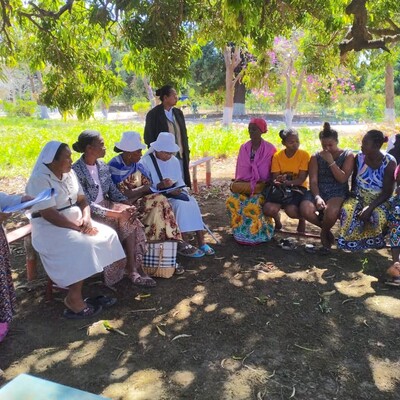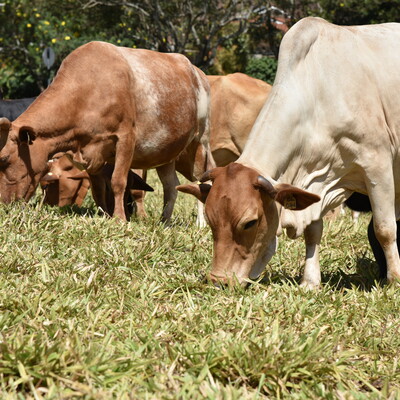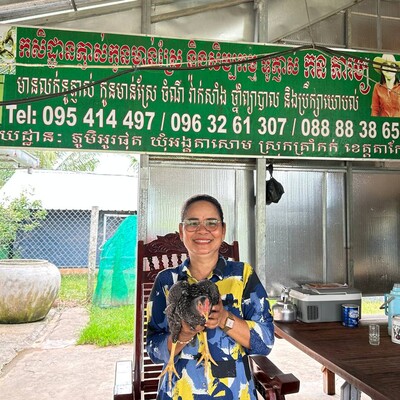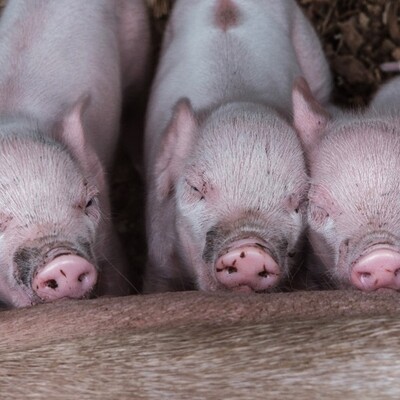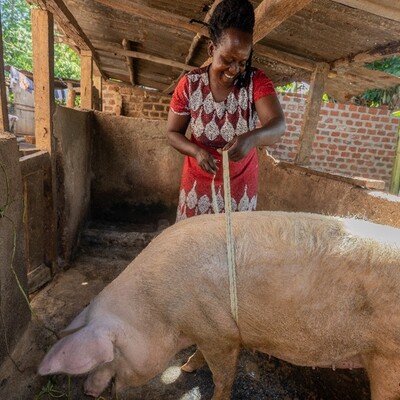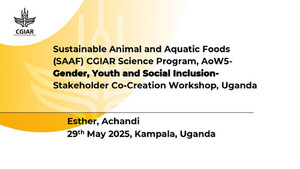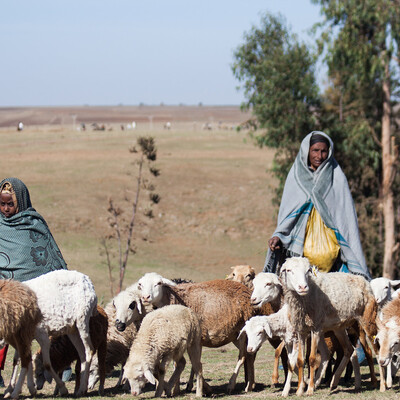
Closing the gender gap to fight Rift Valley fever and other zoonotic diseases
Targeting women in training and information campaigns could help control Rift Valley fever in Uganda
Fever, dizziness, blindness and even inflammation of the brain are among the potential consequences for humans infected with Rift Valley fever. This viral zoonotic disease strikes farm animals, such as camels, cattle, goats and sheep, when they are bitten by infected mosquitoes. It can be transmitted from farm animals to humans when livestock keepers and abattoir workers, for example, come into contact with raw meat or milk.
Rift Valley fever was first reported in Uganda in 2016 and is now considered endemic. The disease can be controlled through vaccination, and the Ugandan government is reviewing vaccine options, although formal approval is still pending. Active surveillance and reporting as well as information campaigns on proper precautions to avoid human infection have already been put in place.
However, despite their important roles in raising and caring for livestock, women are largely barred from accessing information on the disease, from training and from technologies such as vaccines. In a new brief, International Livestock Research Institute (ILRI) scientists Jane Namatovu, Emily Ouma and Zoë Campbell outline the many reasons why including both women and men in disease-control efforts will be essential to curb Rift Valley fever in Uganda.
Gendered risks and gaps in knowledge
Uganda has high concentrations of farm animals, with an estimated 13 million cattle, 14.6 million goats, 3.9 million sheep, 3.7 million pigs and 43 million chickens reared for food, income and cultural reasons.
Livestock are very important to the livelihoods of women and men, but production is constrained by a high prevalence of diseases. During Rift Valley fever outbreaks, animals suffer numerous abortions and mortalities, with, in turn, grave consequences for livestock keepers and their families. Add to this the risks of human infection, and the need to effectively control Rift Valley fever is strikingly evident.
The ability of livestock keepers to recognize Rift Valley fever, whether in animals or humans, is the first step in preventing the spread of disease, write Namatovu and colleagues. However, in Uganda, women have, compared to men, a poorer understanding of the disease as well as limited access to vaccinations and animal health services:
‘Evidence suggests lack of awareness of RVF [Rift Valley fever]… especially amongst women. A knowledge, attitudes, practices (KAP) study conducted in Kabale revealed that more men than women had heard of RVF but understanding of transmission was limited, even amongst men.’
Detecting this kind of gender gap—with important implications for women, men and entire communities—hinges on making efforts to investigate and understand the different roles and risks of women and men in livestock development. Because men and women do shoulder different, but key, responsibilities in livestock management and have different levels of exposure to zoonotic diseases:
‘Men and women’s gender roles... affect their daily activities and risk of RVF transmission, their access to knowledge and information about animal care (including RVF vaccines), and their ability to make decisions about disease control in their livestock.’
For example, more women than men are responsible for taking care of sick animals, handling aborted materials from affected animals and preparing raw meat, which puts them at risk of infection. On the other hand, it is typically men who slaughter infected livestock, which also puts them at risk.
Women and men’s different levels of access to information and decision-making also play a role: women’s poorer understanding of the disease means they may not be able to detect early warning signs. Even if women do notice symptoms among animals, it is men, as heads of households, who are the key decision makers, which prevents women from treating or vaccinating animals on their own. What’s more, some women may face sociocultural constraints which bar them from interacting with men outside their families, which further narrows their options for taking action and contacting animal-health service providers, for example, in case of severe disease outbreaks.
Understanding these gendered differences, underscore Namatovu and colleagues, and integrating gender analysis into research is necessary to develop more effective strategies and policies to control Rift Valley fever and other zoonotic diseases.
Boosting women’s knowledge and influence
In Uganda, traditional cultural and religious attitudes about gender have hampered women in rural areas from actively participating in decision-making on, and management of, livestock. To better detect and control future outbreaks of Rift Valley fever, these challenges must be overcome:
‘Addressing barriers to women’s participation and engagement with livestock disease control in high-risk areas and in surrounding communities is one way to minimize RVF transmission and infection.’
Namatovu and colleagues identify several areas with opportunities to better engage and include women. For example, training opportunities in livestock management are today focused on cattle production, a male domain, which effectively excludes women from learning opportunities. Awareness-raising campaigns often inadvertently bypass women, for example by choosing to disseminate information via posters or written announcements in public places, such as markets, that women have limited access to. Finally, women, despite their roles and responsibilities in day-to-day care of livestock, are not recognized as essential actors in livestock development and they are therefore rarely targeted for agricultural extension services.
These challenges, which inhibit women from obtaining equal rights and roles in livestock development, are not unique to Uganda. In fact, although women comprise almost two-thirds of the world’s 600 million poor livestock keepers, they receive only 5% of the agricultural extension services, and only 15% of extension workers are female.
This is a problem not only for women, but for entire societies, not least in the face of increasingly common outbreaks of zoonotic diseases, such as Rift Valley fever or COVID-19.
Future policy, investment and research priorities
Detailing policy and investment options for better protection against future zoonotic disease outbreaks, another brief recently published by ILRI concludes that women’s empowerment leads to healthier people, animals and environments—the trifecta of a successful ‘One Health’ approach to preventing future pandemics.
This brief, one in a series of seven, offers practical action areas for governments, investors and policymakers to invest in better health and improved food systems. As first steps to help close the gender gap in livestock development and zoonotic disease control, the brief lists acknowledging gender inequities, integrating gender into project planning and researching gender inequalities. Already, ILRI is leading a pilot study assessing the effectiveness of integrating women in planning and deployment of Rift Valley fever vaccines in northern Kenya, the results of which could help inform future vaccine efforts in Uganda.
Finally, ILRI scientists underscore the importance of making interventions and policies gender responsive, by addressing gendered constraints to successfully prevent and treat zoonotic diseases.
#
Header photo: Pratyusha Basu (left) with dairy farmers in Uganda (photo credit: ILRI/Basu)






